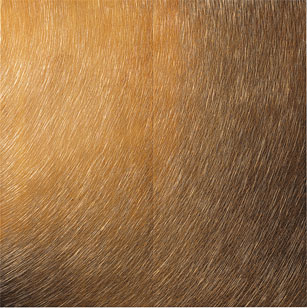
Born in 1962 in Oran (DZ)
Lives and works in New York City, New York (US)

2000
Copper, varnish
200 x 200 cm
Year of Purchase: 1999
While the works of Laurent Pariente are to do with the silence of whiteness and the power of light, they also flirt in a singular man¬ner with confinement, oppression and violence. His almost architectural installations, kinds of mazes for the senses, play with light and shadow on the walls, the better to lose visitors in their own void. The slits and windows cut out along his corridors toy with levels of brightness and force us to develop the psycho-sensory dimension of our field of perception. The carved metal sheets of Untitled, one zinc, the other copper, follow the same principles of constructing the visible, with light appearing through the removal of material. The plates become space. Relying on ancestral engraving methods, namely a sharp burin used to remove material from the surface of a sheet of metal, the artist creates a void in the raw material. The grooves carved out with brusque, violent gestures both circumscribe the space of a potential work – that of an abstract engravings and most of all create a void in which to capture light. The groove is turned into a ray of light. Laurent Pariente tries to produce artworks that get away from the traditional notion of the object. Thus the light vibrations caught by the incised metal endlessly renew the viewer’s gaze and prevent the idea of any single ideal way of taking in a work. ‘It is the engraved plate I have gesturally grappled with that began my relation to the wall.’1 He explains how, in cutting into the metal, ‘the body opened up a luminous space’, just as the wall ‘is also the opening up of a new space.’ Like Yves Klein who in 1957 presented Monochrome 52, a small square metal plate straight from the factory and bearing the marks of industrial sanding, the artist speaks to us about the void: ‘The void is a prerequisite for exchange. To blank one’s mind is to place oneself in a position to listen and pay attention.’2 The two artists would seem to share an ambition to make manifest the immaterial, and if perceiving means to leave aside both matter and one’s own ability to apprehend it theoretically and intellectually, let us let the body do its work.
Béatrice Josse
1 ‘Habiter l’œuvre : entretien avec Laurent Pariente’, in Architecture d’aujourd’hui, n° 311, Paris, June 1997.
2 Ibid.